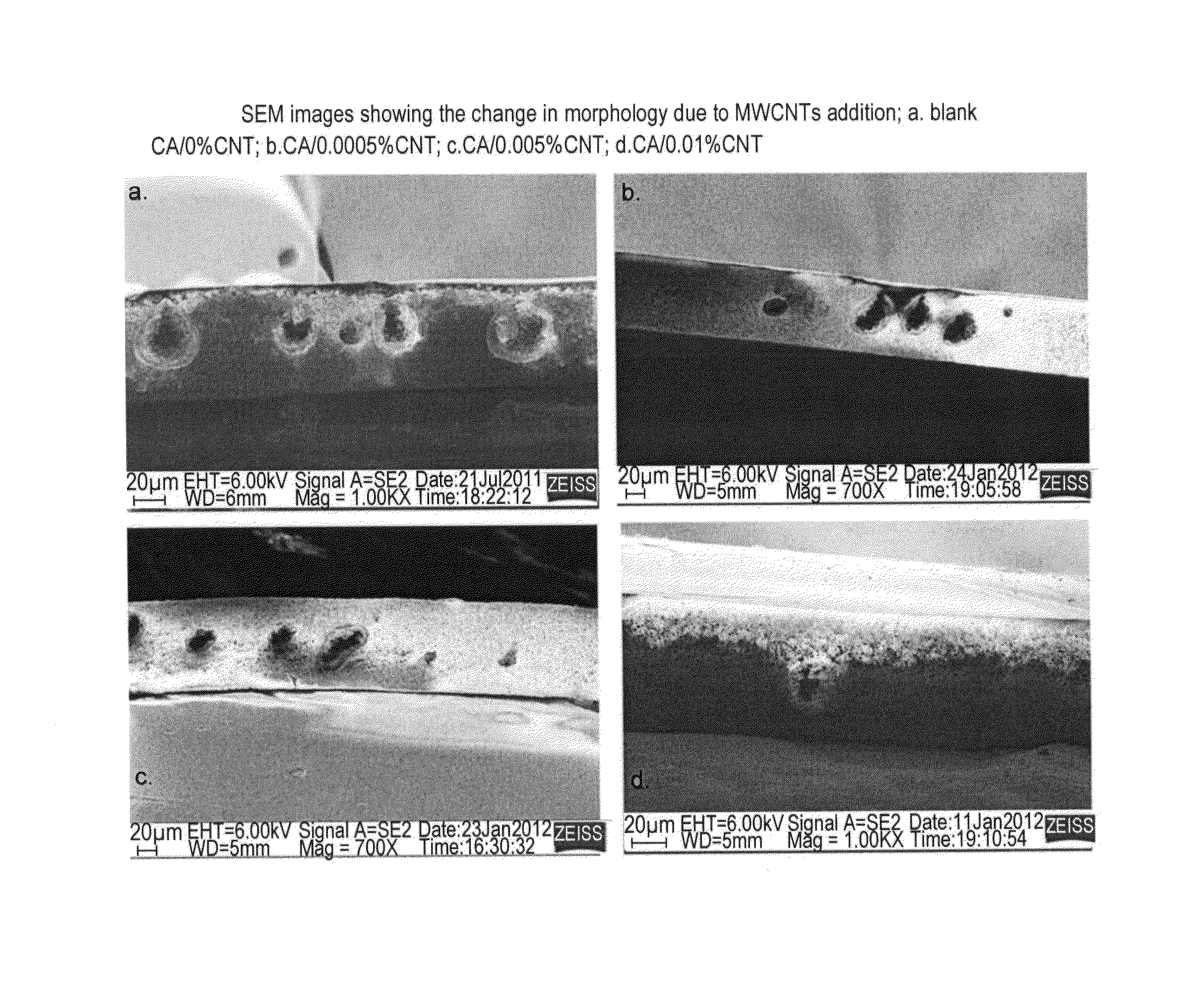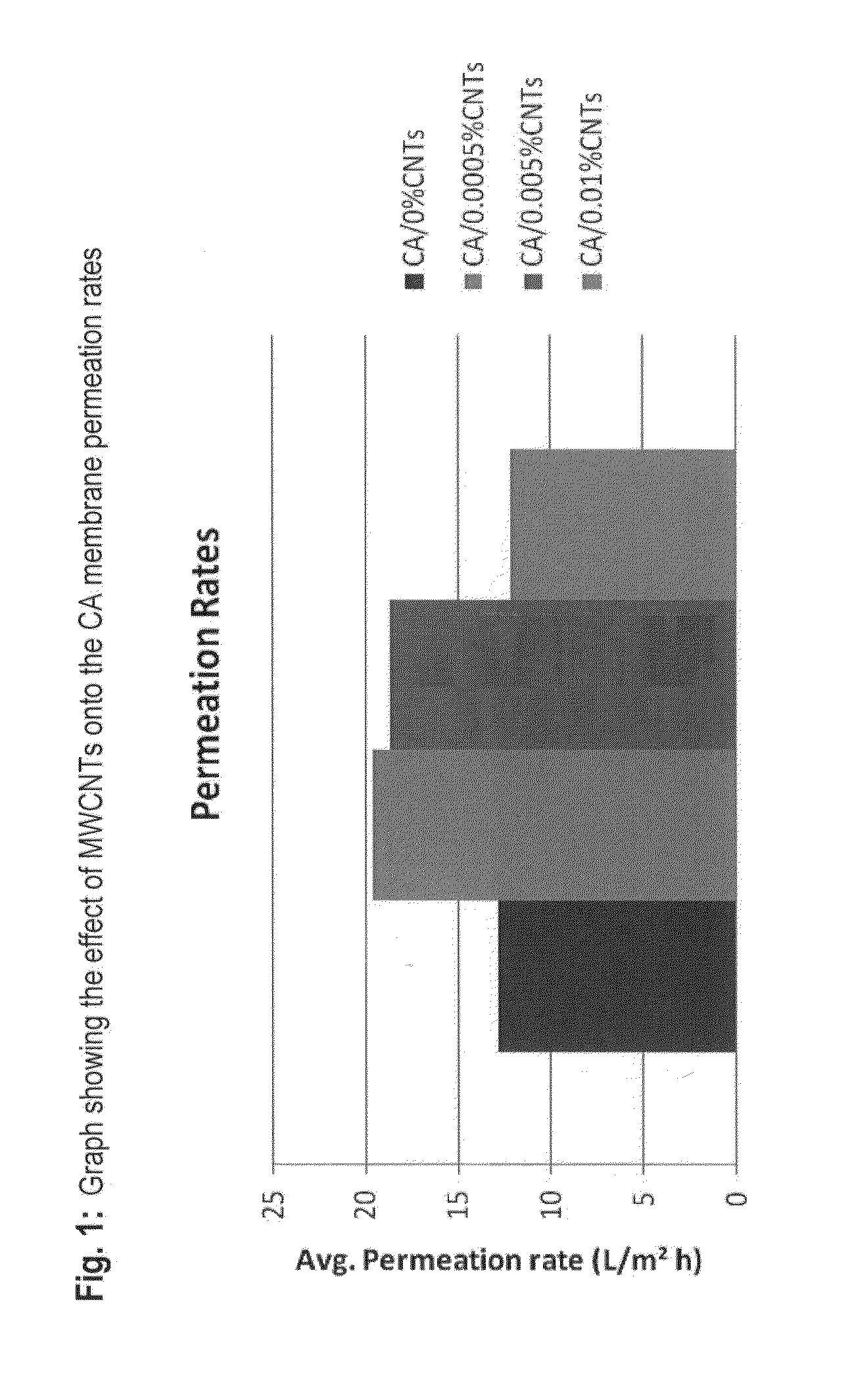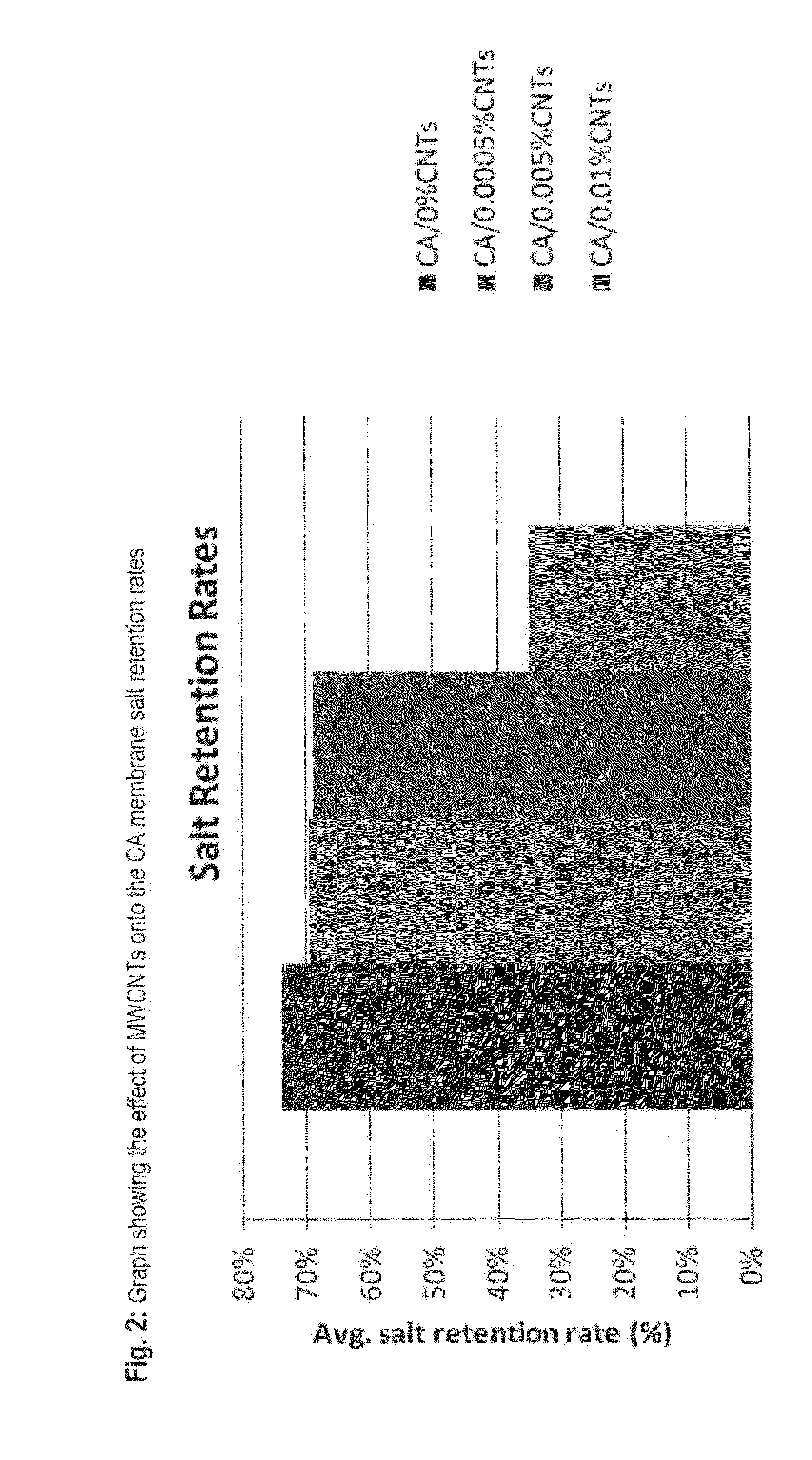Polymer-carbon nanotube nanocomposite porous membranes
a technology of polymer carbon nanotubes and porous membranes, which is applied in the field of new polymercarbon nanotubes (functionalized) asymmetric porous membranes, can solve the problems of not being able to scale to the large surface area necessary for commercial membrane fabrication, and the use of cnts as nanofillers in industrially-suitable polymers such as cellulose acetates (cas) has not been reported
- Summary
- Abstract
- Description
- Claims
- Application Information
AI Technical Summary
Benefits of technology
Problems solved by technology
Method used
Image
Examples
examples
[0133]The following examples are provided for illustration purposes only and the in no way limit the scope of the present invention. Other types of polymers, carbon nanotubes (both single-walled, double-walled, multiple-walled, functionalized and unfunctionalized), substrates, and various other additives, fillers, and process conditions are also applicable to present invention.
Materials
[0134]Cellulose acetate (CA) (avg. molecular weight 50,000, 39.7 wt % acetyl content) was purchased from Sigma-Aldrich Co. Acetone (density 0.791 g / mL in 25° C., purity ≧99.8%) purchased from Sigma-Aldrich Co. was used as a solvent. Deionized water was used as a non-solvent. MWCNTs Baytubes® C150P (C-purity ≧95 wt %, inner diameter of ˜4 nm, outer diameter of ˜13 nm, and length >1 μm) purchased from Bayer Material Science AG. were used as nanofillers. H2SO4 (purity=99.999%) purchased from Sigma-Aldrich Co. and HNO3 (purity=69%) purchased from Patel Group, India were used in oxidative purification of t...
examples 1-4
Preparation of Cellulose Acetate Mixtures
[0138]15 wt % (15 g) the CAs described above were dissolved in different wt % of acetone determined according to the wt % of the F-CNTs to be added. The mixture was left overnight under continuous stirring until the CAs completely dissolved forming clear homogenous solutions. F-CNTs were dispersed in deionized water by sonication for 10 seconds, then each aqueous solution was added in stages to a respective CA stock solution with vigorous stirring. After all the F-CNTs were added to the CA solutions, the mixtures were sonicated for 2 minutes, then left overnight to allow any trapped air bubbles to dissipate. Different masses of F-CNTs were added to form stock solutions, in order to result in 5×10−4 wt %, 5×10−3 wt %, and 1×10−2 wt % F-CNT in the resulting CA solid membranes. A blank membrane having no CNTs was also prepared using the same procedure above. The amounts of the F-CNTss for each of Examples 1-4 are depicted in Table 1.
TABLE 1Amoun...
PUM
| Property | Measurement | Unit |
|---|---|---|
| molecular weight | aaaaa | aaaaa |
| length | aaaaa | aaaaa |
| length | aaaaa | aaaaa |
Abstract
Description
Claims
Application Information
 Login to View More
Login to View More - R&D
- Intellectual Property
- Life Sciences
- Materials
- Tech Scout
- Unparalleled Data Quality
- Higher Quality Content
- 60% Fewer Hallucinations
Browse by: Latest US Patents, China's latest patents, Technical Efficacy Thesaurus, Application Domain, Technology Topic, Popular Technical Reports.
© 2025 PatSnap. All rights reserved.Legal|Privacy policy|Modern Slavery Act Transparency Statement|Sitemap|About US| Contact US: help@patsnap.com



